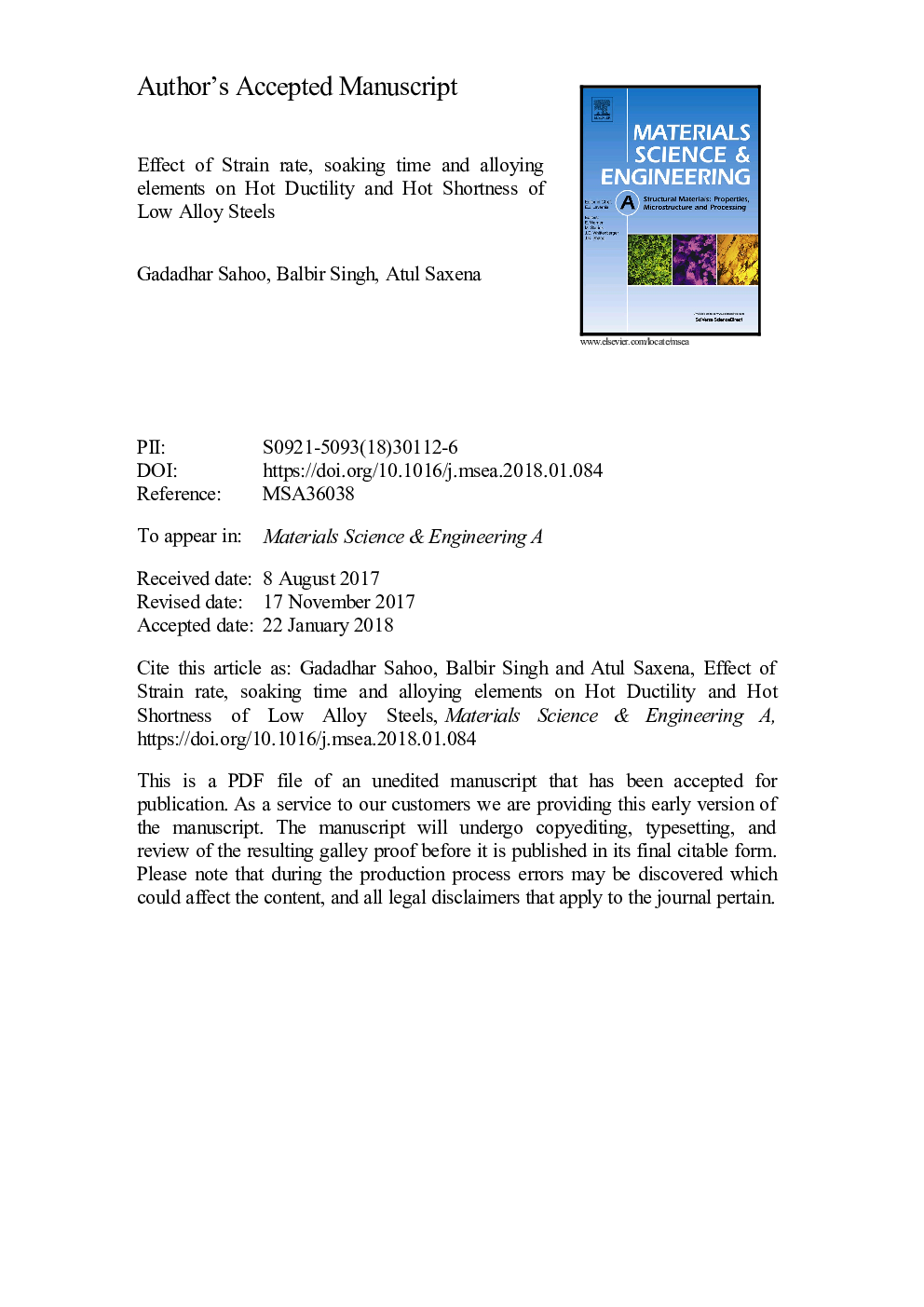| Article ID | Journal | Published Year | Pages | File Type |
|---|---|---|---|---|
| 7973237 | Materials Science and Engineering: A | 2018 | 25 Pages |
Abstract
Susceptibility to hot shortness and hot cracking of Cu bearing steels is generally minimized with the addition of Ni. However, in this study, attempts have been made to reduce the hot working problems in such steels by the addition of Si, P and either very low content of Ni or no Ni, which will be understood after evaluating their hot ductility and hot shortness properties. The main techniques employed for this study are hot tensile test, analysis of fractography and characterization of scale/steel interface after long exposure at high temperature. The steels having 0.80-0.86% Si exhibited adequate hot ductility at all deformation temperatures ranging from 850â¯Â°C to 1200â¯Â°C during slow strain rate (0.005â¯sâ1) testing conditions and the fracture morphology exhibited both ductile conical dimples and transgranular fracture. On the other hand, ~0.40% Si containing steels exhibited significantly reduced hot ductility at 850â¯Â°C and failed in intergranular brittle fracture mode. The improved hot ductility of high Si containing steels is explained using Fe-P phase diagram along with the proposition of inverse segregation of Si and repulsive interaction between P and Si. On increasing strain rate to 6.5â¯sâ1, ductile failure was observed in all steels. The long duration of soaking at 1200â¯Â°C lead to intergranular decohesion and hot tearing during tensile testing in ~0.12% and ~0.19% P containing steels, respectively. A separate study of oxidation in air at 1200â¯Â°C indicated that presence of ~ 0.12% P in steel is beneficial in reducing hot shortness by keeping Cu enriched phase away from the scale/steel interface. In contrary to this, oxidation of ~0.19%P containing steel is detrimental to hot working as the grain boundaries of this steel were severely oxidized to the depth of few grains. Other alloying elements such as Ni and Cr in experimental steels had no effect on hot ductility and hot shortness properties.
Related Topics
Physical Sciences and Engineering
Materials Science
Materials Science (General)
Authors
Gadadhar Sahoo, Balbir Singh, Atul Saxena,
